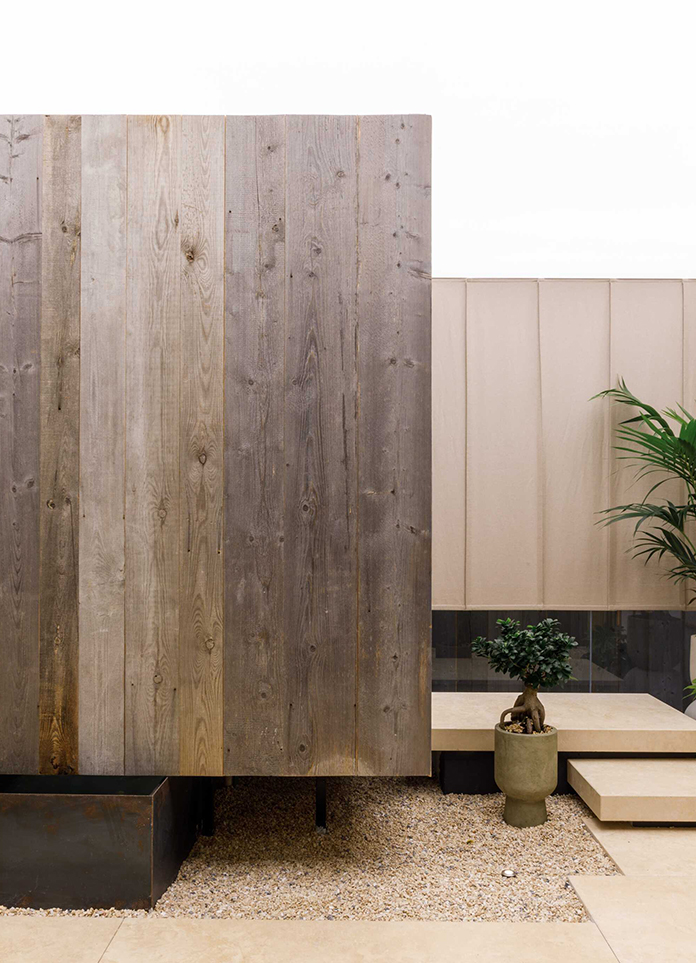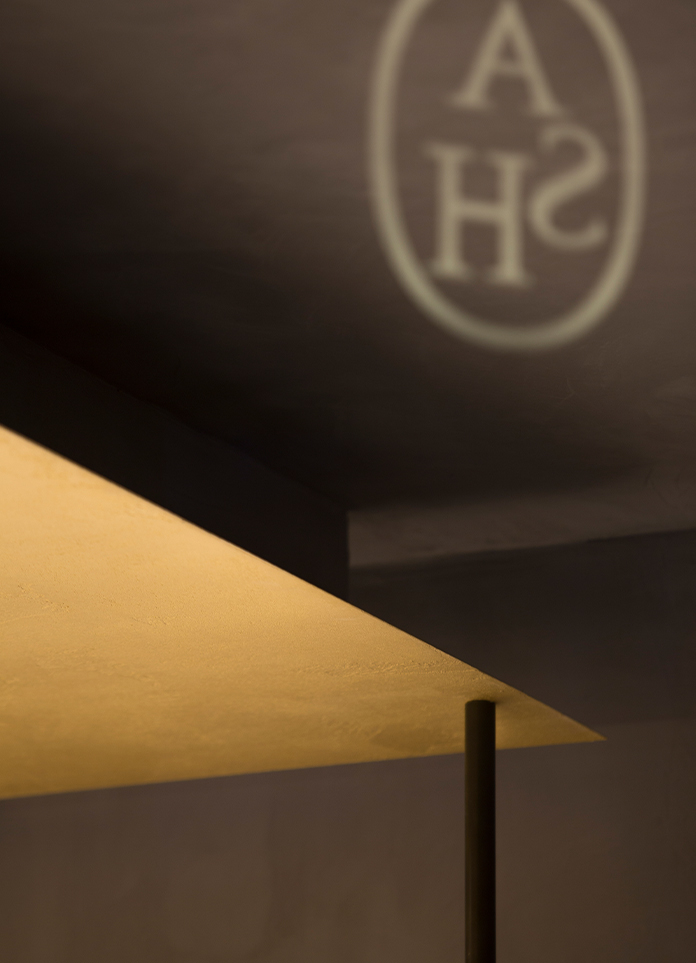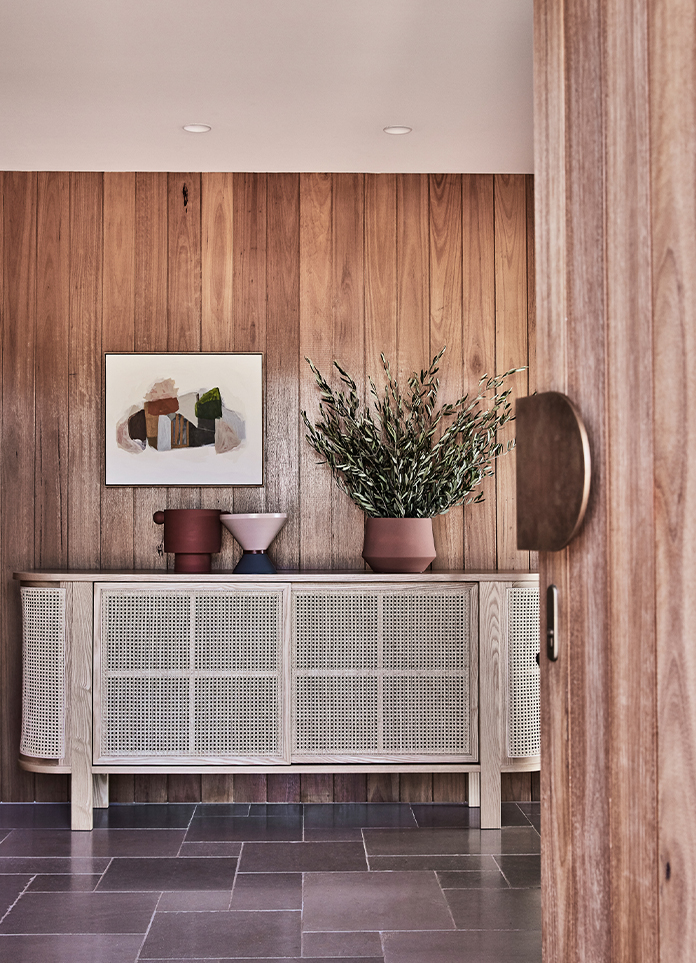
Upon entry a surreal, quasi-outdoor space greets you.A weathered cabin hanging above a trough of water conceals a guest lavatory, complete with a floor hole looking over a shoal of koi.The depiction of Tanizaki’s obsession with the traditional bathroom is palpable, together with the feeling of being outdoors, sensorially separated from the rest of the house.
The simulated courtyard, clad in local hardstone and floor to ceiling shoji doors, is topped by a reflective, light-emitting ceiling.By day, dim sunlight enters through noren curtains,into the fish pond, bounced off the stonework.By night, a stretched ceiling concealing LEDs, brightens the space to simulated daylight conditions, giving the impression of an overcast sky.
Two opposing sliding doors, one facing West the other East, lead to the separated sleeping and living areas.A timber-clad corridor reveals the sleeping areas, with bedrooms and bathrooms concealed behind shoji doors.The second door uncovers the spacious living area, and its breath-taking island views.Slatted oak walls filter daylight around the dark kitchen, while a series of contrasting materials incrementally define the cooking area.
A central, modular sofa is vaulted over by a timber space truss carrying bookshelves, storage, entertainment and a leafy trellis, while hiding lights and air-conditioning units.The studio’s iconic Red Blue Shelf (2011), still in production at Stephen’s workshop, is reproposed in monochromatic oak, transforming from bookshelf to interior architecture.The austere dining table top,a three-metre slab of glass-fibre reinforced concrete, sits between solid oak blocks, deliberately placed in the middle of the space, perpendicular to the distant views, while facing works of art on opposite sides.
- Interiors: Chris Briffa Architects
- Photos: Hanna Briffa

















